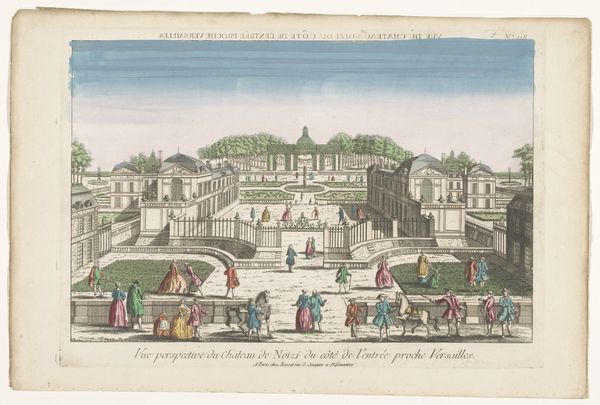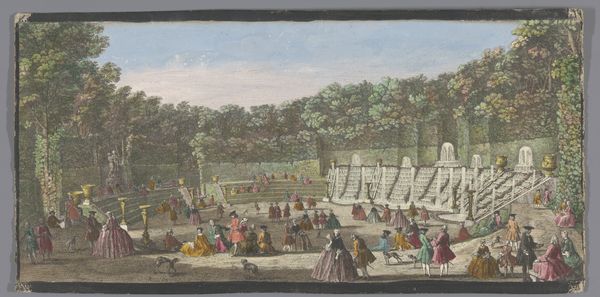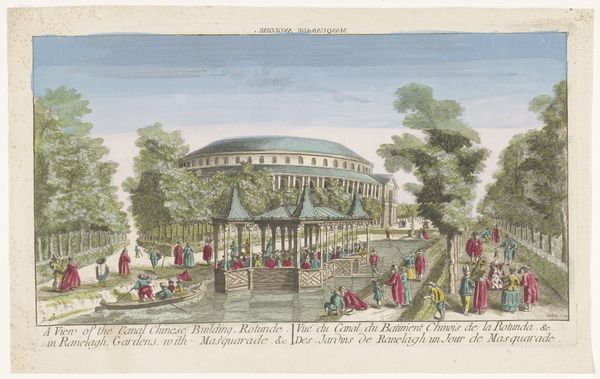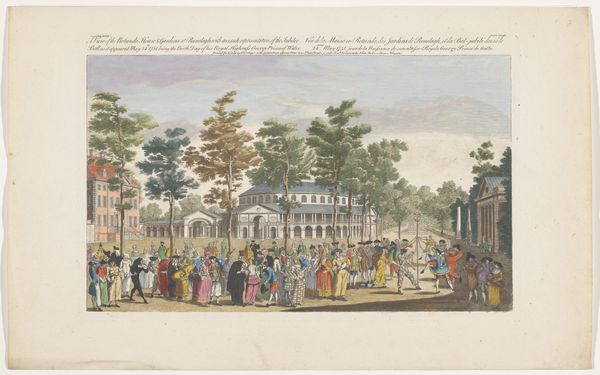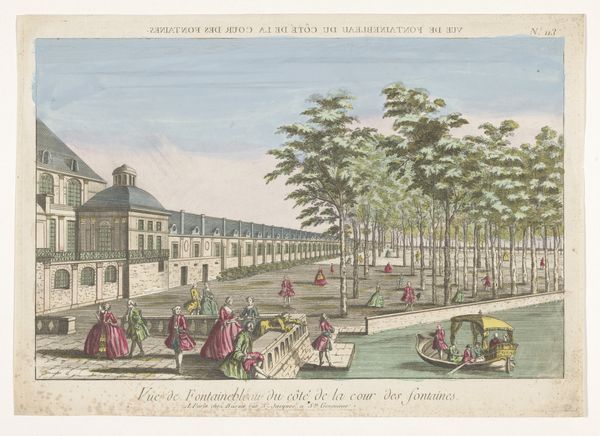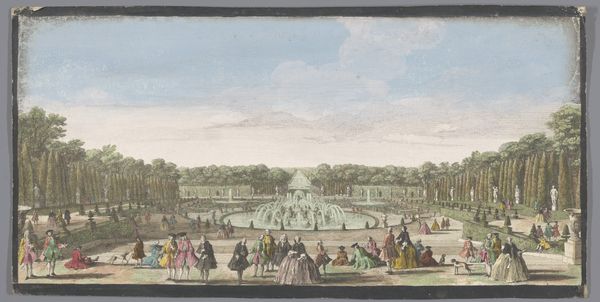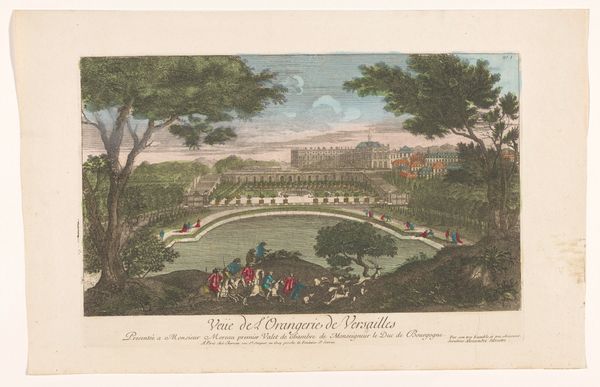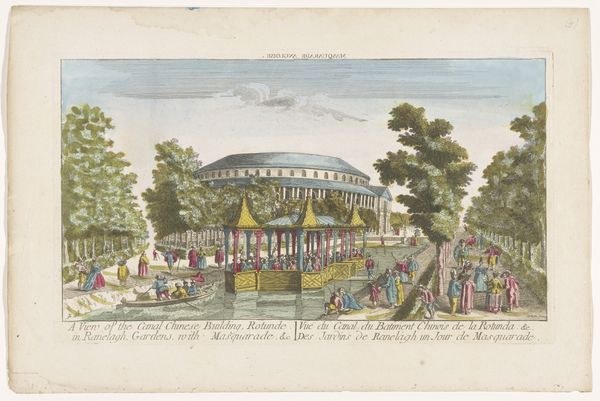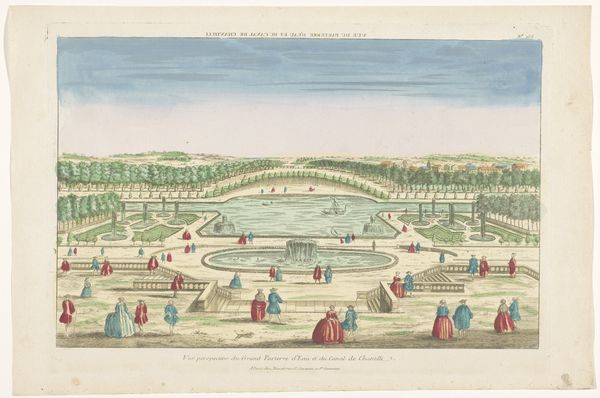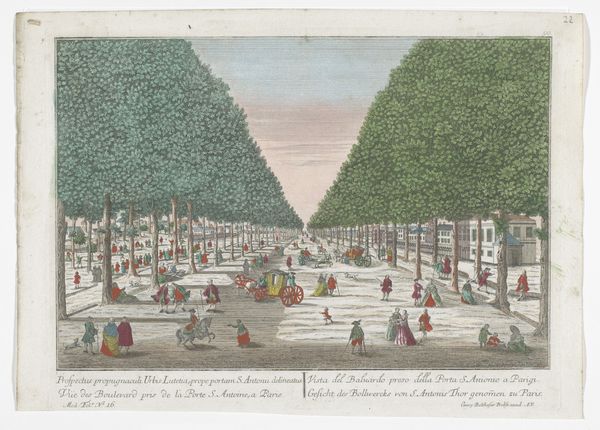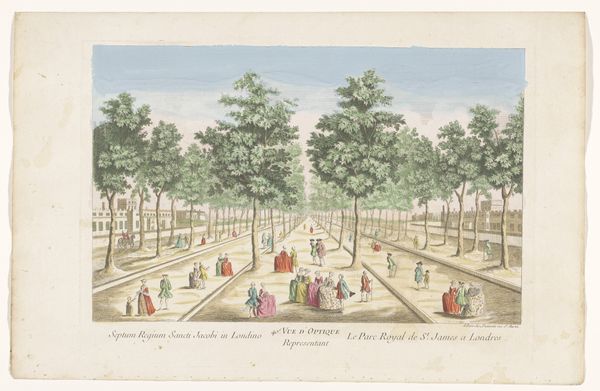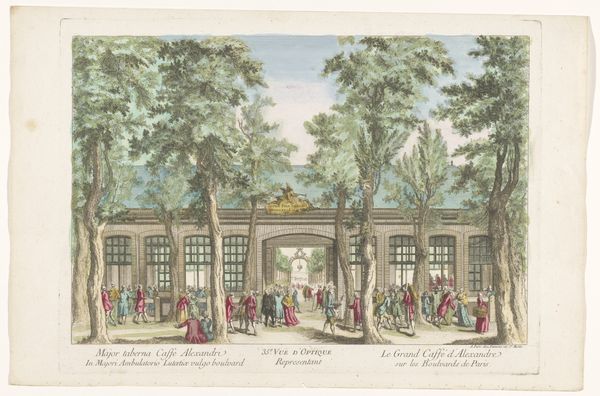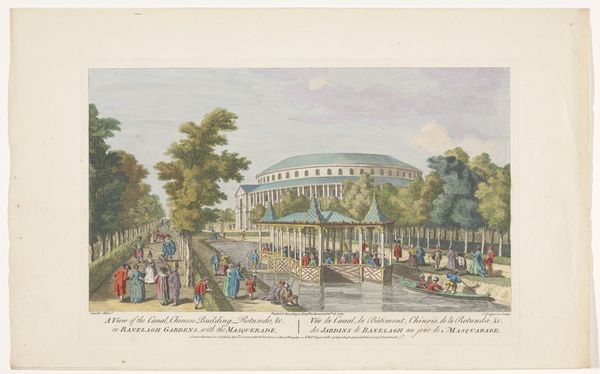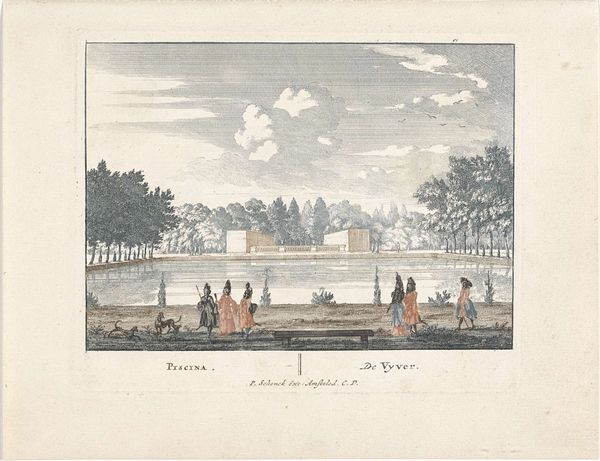
Gezicht op het Bassin Octogonal in de Jardin des Tuileries te Parijs 1745 - 1775
0:00
0:00
print, watercolor
# print
#
landscape
#
watercolor
#
cityscape
#
rococo
Dimensions: height 292 mm, width 427 mm
Copyright: Rijks Museum: Open Domain
Editor: Here we have "Gezicht op het Bassin Octogonal in de Jardin des Tuileries te Parijs," a print and watercolor by Jean-François Daumont, likely created sometime between 1745 and 1775. Looking at this, I’m struck by how meticulously ordered the landscape is, almost like a stage set. What's your take on it? Curator: Oh, "stage set" is delightfully put! It resonates perfectly with the Rococo era's penchant for theatrics. This print whispers tales of a time when nature itself was sculpted to mirror societal order and aspirations. Notice how the lines, trees, and even the little figures seem to dance in a choreographed manner. What stories do you think those meticulously placed people are enacting? Editor: Hmm, perhaps they're showing off their status, taking a leisurely stroll, seeing and being seen? It's all so artificial, though charming. Does that artifice tell us something about the period? Curator: Exactly! It reveals the period's obsession with control and refinement. Every detail, from the carefully trimmed trees to the elegantly dressed figures, screams manufactured beauty. There's a sense of playful artificiality – a rejection of the raw, untamed natural world. But tell me, does that controlled nature feel liberating or confining? Editor: That's a tough one. I suppose, for the privileged, it was liberating. A place to perform their roles. But maybe stifling in its own way. Curator: Yes, it is a duality isn’t it? Freedom and constraint in the same meticulously crafted space. The piece is less about a place and more about the dream of one. I will remember that for quite a while. Thanks! Editor: Thank you; that really helped me get more in touch with the context of this period.
Comments
No comments
Be the first to comment and join the conversation on the ultimate creative platform.
